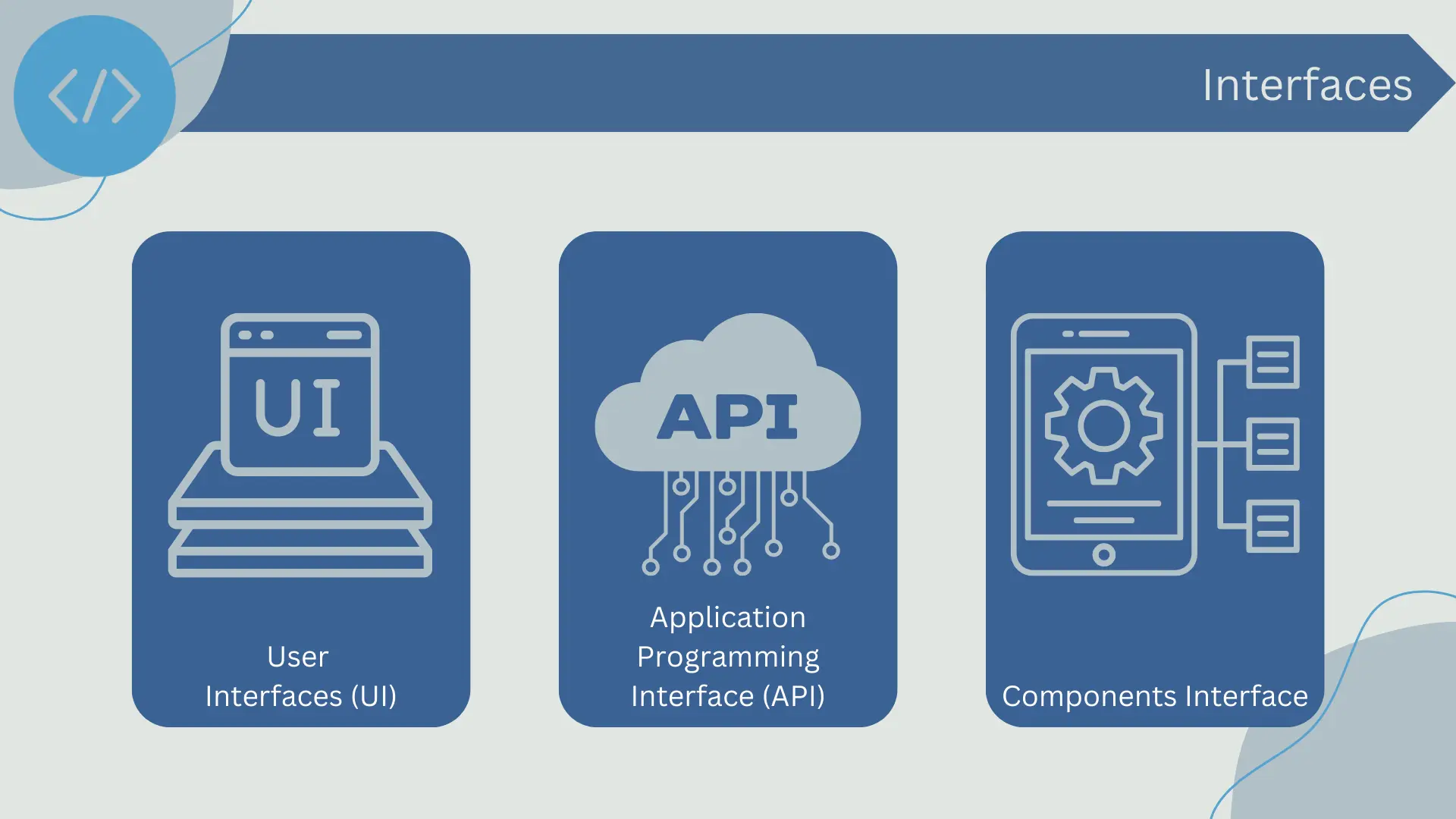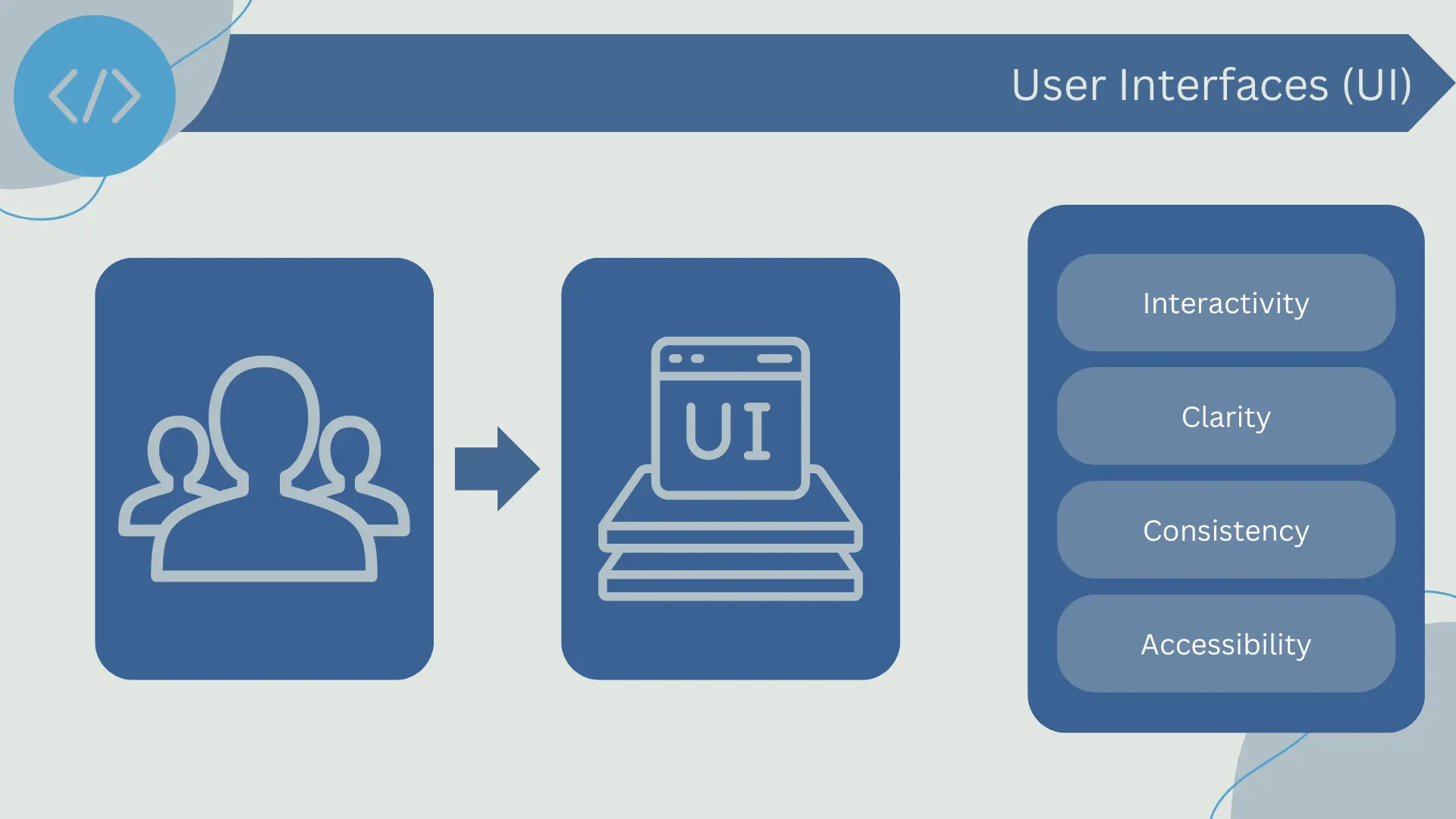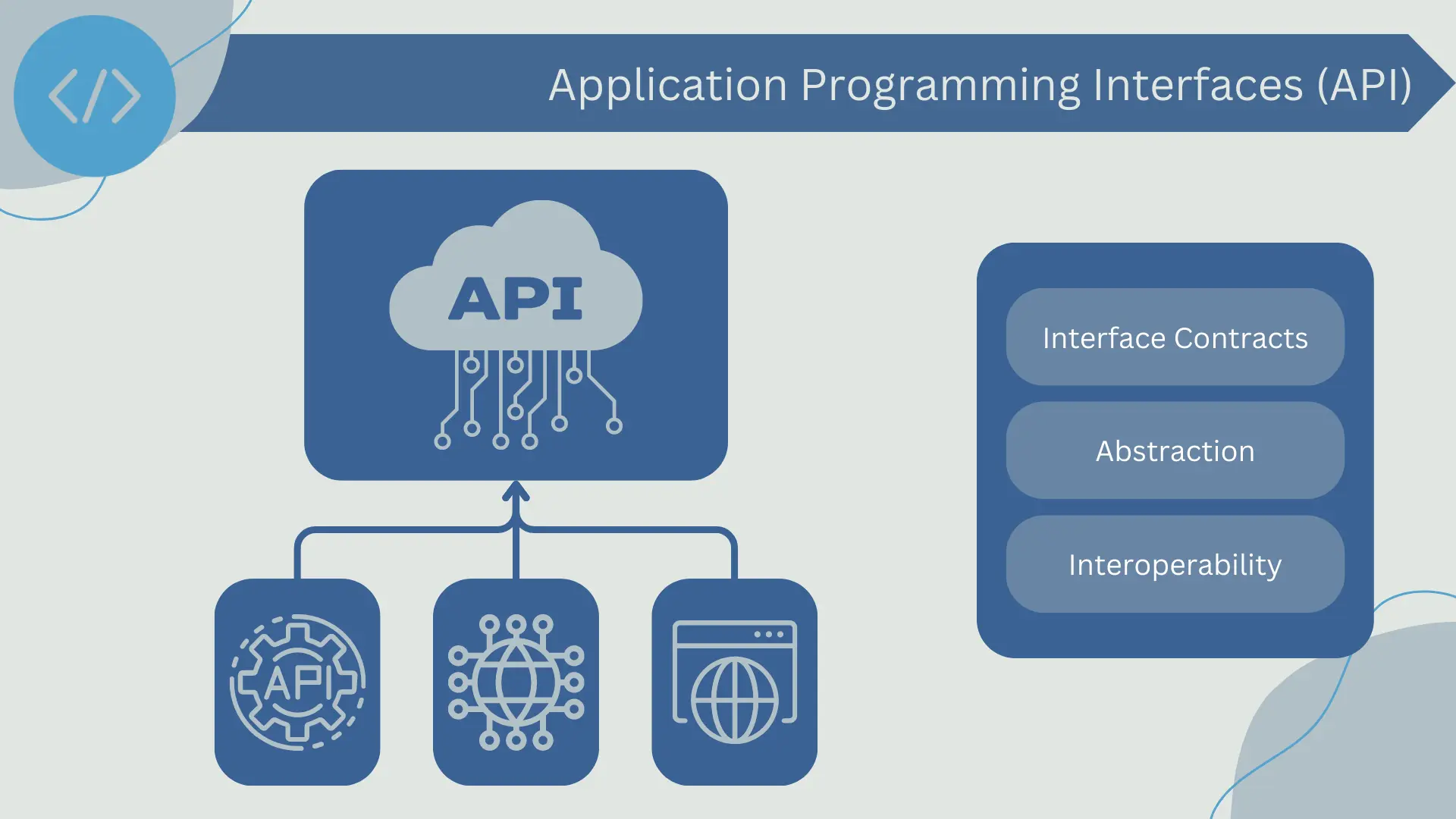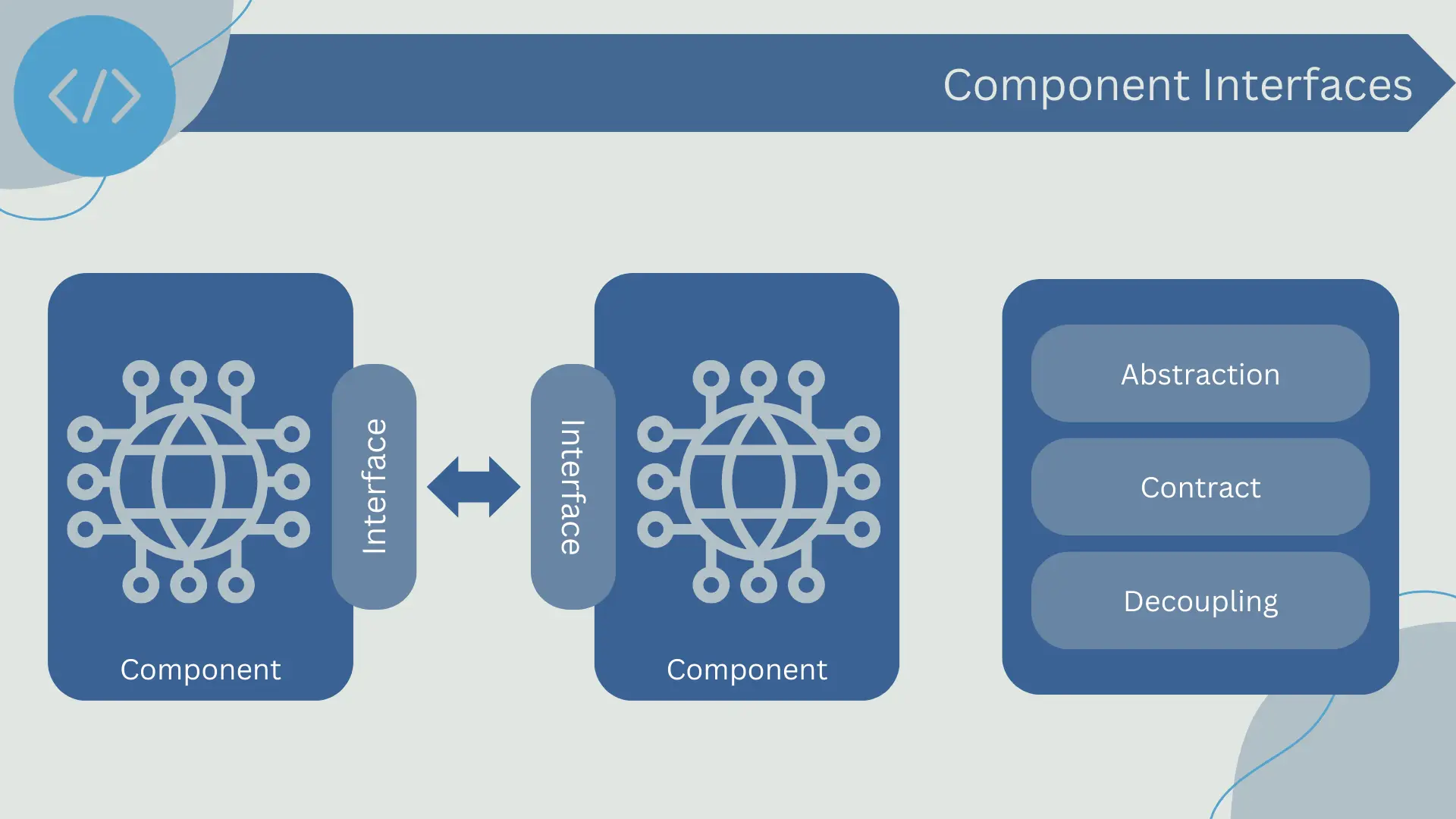Software interfaces are the points of interaction between different software components and elements. They are fundamental to defining how components communicate and collaborate with each other to achieve the system's objectives. Interfaces can be used by humans (user interfaces) as well as other systems or software components (Application Programming Interfaces, or APIs).
Interfaces must be designed to be clear, consistent, and understandable for the users who use them, whether they are humans or systems.
- User Interfaces (UI): The UI is the part of the software that interacts with users. It must be designed considering usability, accessibility, and user experience. This means that the UI should be intuitive, efficient, and pleasant for users. User interfaces can vary widely depending on the type of software, from Graphical User Interfaces (GUI) in web or mobile applications to Command-Line Interfaces (CLI) in console tools.
- Application Programming Interfaces (APIs): APIs define how other systems or software components can interact with a specific component. They may expose functions, methods, or data that can be used by other components. APIs must be designed to be robust, flexible, and secure. They should provide a clear abstraction of the internal functionality of the component, allowing the component to be used without needing to understand its internal implementation.
- Component Interfaces: These are the interfaces that define how the internal components of a system interact with each other. These interfaces are essential to achieve a high level of modularity and enable encapsulation in software design.
When designing interfaces, it is essential to maintain consistency, simplicity, and clarity. A good interface design allows users or systems interacting with a component to quickly understand how to use it and what to expect from it. It is also fundamental for interoperability among different components of a system, so its importance cannot be underestimated in software architecture design.

User Interfaces
User Interfaces (UI) are critical software components in any system as they represent how users interact with the underlying functionality of the system. They can range from simple command-line interfaces to highly interactive Graphical User Interfaces (GUI) in a web or mobile environment. The design of the user interface can have a significant impact on the usability of the system, so it is an area that is often carefully addressed during the software architecture design phase.
User interfaces should have the following characteristics:
- Interactivity: User interfaces allow users to interact with the application, whether through text commands, touchscreen taps, mouse clicks, voice gestures, and more.
- Clarity: Effective user interfaces should be intuitive and easy to use, providing clear guidance and immediate feedback to help users understand how to interact with the application.
- Consistency: A good user interface should maintain consistent appearance and functionality across all parts of the application to help users understand how to use it.
- Accessibility: User interfaces should be designed in a way that is accessible to all users, including those with disabilities.

User interfaces play a key role in software architecture as they are the point of contact between the user and the system. They are responsible for collecting user input and transmitting it to the system in a way that can be understood and processed. They also take the system's output and present it to the user in a comprehensible manner.
During the design of the software architecture, it is important to consider the requirements of the user interface and how they will impact the structure of the system. This can influence decisions about which software components are needed, how they communicate with each other, and what design patterns should be used.
Since the user interface is the most visible part of the system for the end-user, it can have a significant impact on the overall user perception of the system's quality and usability. Therefore, investing in user interface design can have a significant return in terms of user satisfaction and system success.
Application Programming Interfaces (APIs)
Application Programming Interfaces, commonly known as APIs, are sets of rules and protocols established to enable interaction between different software components. They are a way of defining how one software component can interact with another and what functionalities or data it can request or provide. In software architecture, APIs are fundamental to interoperability and encapsulation, as they allow components to communicate without needing to know the internal details of how other components are implemented.
APIs have the following characteristics:
- Interface Contracts: An API establishes an interface "contract" that specifies how a software component can be used. This contract includes the available functions, the parameters they require, the data types they use, and the return values they provide.
- Abstraction: APIs provide a level of abstraction, hiding the complexity of the internal implementation of a component. This allows software components to be more easily reusable and modifiable, as internal changes do not affect API consumers as long as the interface contract remains constant.
- Interoperability: APIs enable interoperability between different software components, regardless of how they are implemented or in which programming language they are written.

APIs play a critical role in modern software architecture. They allow complex systems to be broken down into smaller, more manageable components, each with its own API. This leads to a more modular and flexible software architecture, where components can be developed, tested, and deployed independently.
Additionally, APIs enable the integration of different systems, both internal and external. This is especially important in today's world of microservices and distributed systems, where different software components, possibly deployed in different locations or even belonging to different organizations, need to interact with each other.
During the software architecture design phase, it is crucial to carefully design the APIs to ensure proper interaction between components and enable the future evolution of the system. This includes decisions about the functionalities that will be exposed through the API, the protocols and standards that will be used (e.g., REST, GraphQL, gRPC), and how aspects like security, versioning, and error handling will be managed.
Component Interfaces
Component interfaces are fundamental to the design and structuring of software architecture. They are abstractions that encapsulate the behavior of a software component and define how it interacts with other components. In essence, they describe what a component can do and how it can be used.
Component interfaces have the following characteristics:
- Abstraction: Component interfaces provide a level of abstraction, meaning they hide the implementation details of the component and expose only the methods, properties, and events necessary to use the component.
- Contract: Like APIs, component interfaces act as a contract between the component and the components that use it. This means that components interacting with another component through its interface can trust that the component will comply with the contract defined by the interface.
- Decoupling: Component interfaces contribute to decoupling in software architecture design. By using interfaces, components can interact with each other without needing to know the implementation details of other components. This allows components to be interchangeable as long as they implement the same interface, improving the modularity and flexibility of software architecture design.

Component interfaces are a crucial element in the design of software architecture, particularly in component-based and object-oriented architectures. They enable the creation of reusable and easily interchangeable software components.
During the software architecture design phase, it is important to clearly define the interfaces of components. This includes identifying the operations each component must provide, defining the parameters and return types of these operations, and specifying any pre/post conditions or restrictions on the operations.
A good practice in designing component interfaces is to follow the principle of "least astonishment" or "principle of least authority" (POLA). This means that a component's interface should only reveal the minimum information necessary to use the component, thus limiting the coupling between components and increasing the security and robustness of the software system.
